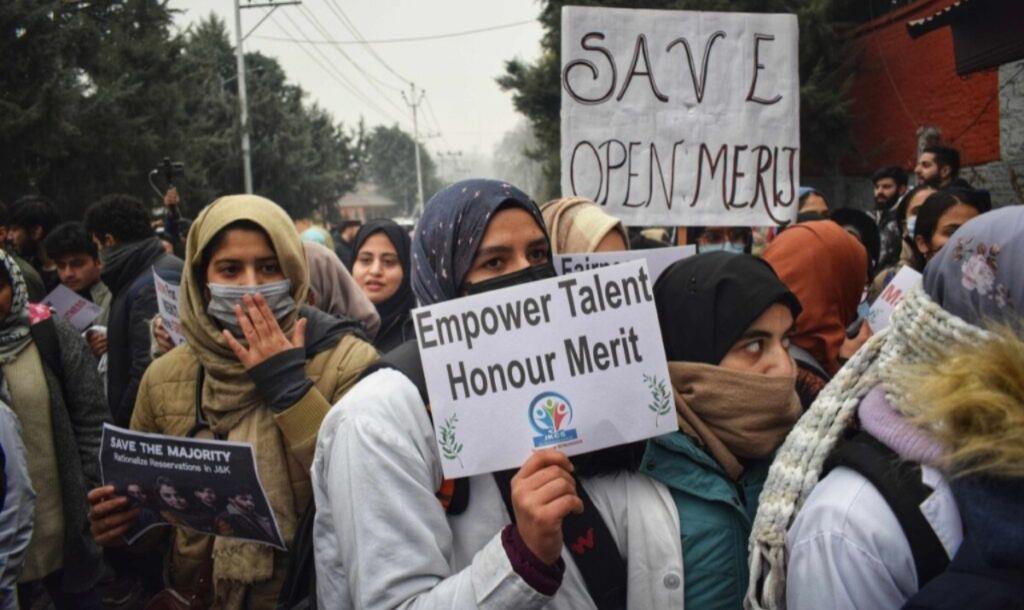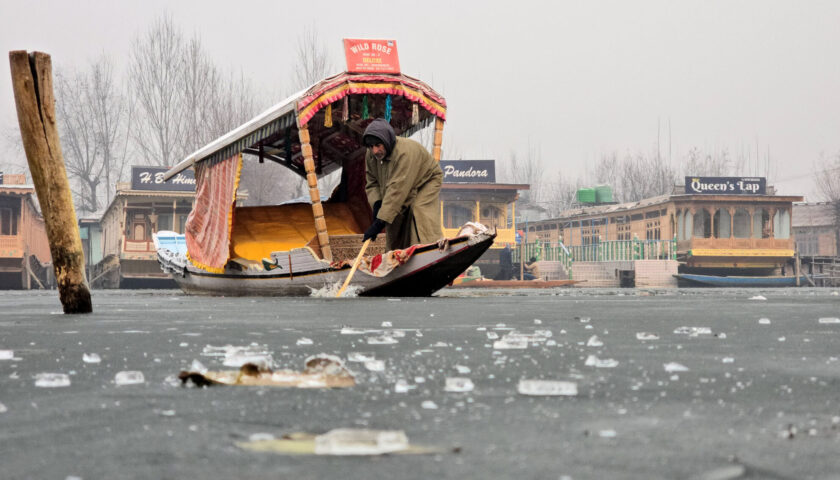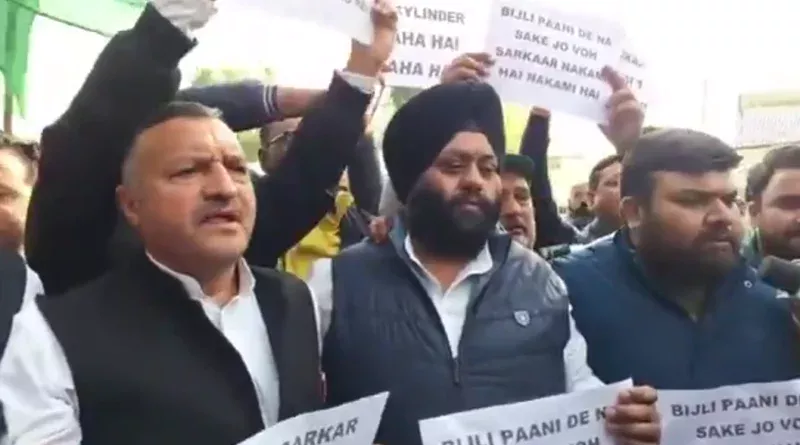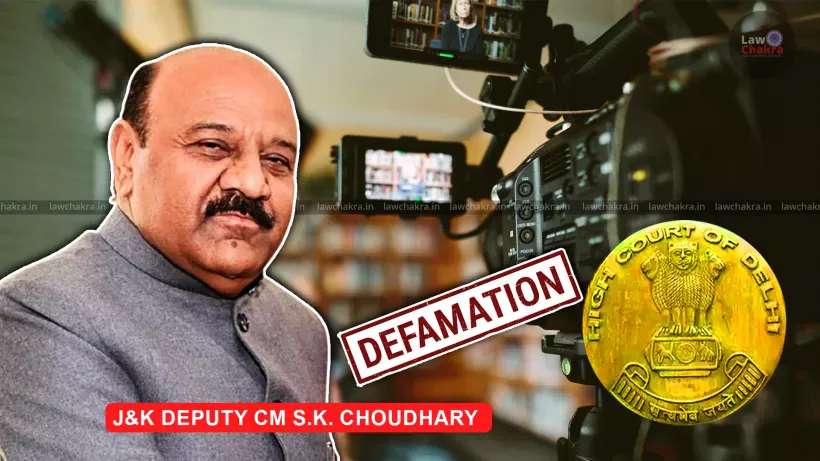The reservation debate in Jammu & Kashmir has taken a new turn, with open merit students launching a digital signature campaign demanding a review of the existing quota system
By: Javid Amin | 19 Aug 2025
A Debate That Refuses to Fade
The reservation debate in Jammu & Kashmir is not new, but 2024 has given it a fresh spark. At the heart of the controversy lies the approval of 10% reservation for the Pahari community, a move that has reignited deep questions about fairness, equality, and the shrinking space for open merit students.
For the first time, instead of protests on streets or hunger strikes, a new-age movement is unfolding: a digital signature campaign. Spearheaded by the Open Merit Students Association (OMSA), the campaign is quickly gathering momentum, collecting thousands of online signatures from across the Union Territory.
This is more than just another student-led agitation. It represents a generational frustration—a growing sense among young people that the system is stacked against merit.
What Triggered the Campaign?
The immediate trigger was the government’s approval of 10% reservation for the Pahari community in 2024. While the move was celebrated by many as an overdue recognition of a marginalized community, open merit students saw it differently.
-
Already Shrinking Pie: Before the Pahari quota, nearly 70% of government jobs and seats in professional colleges were already reserved across various categories (SC, ST, OBC, EWS, etc.). With the new quota, the open merit share has been squeezed further.
-
Sense of Injustice: Open merit students argue that while the intention may be to uplift disadvantaged groups, the burden falls disproportionately on those competing without any reservation benefit.
-
Frustration Among the Educated Youth: In a region already struggling with unemployment, this has intensified anxiety and resentment among students, who feel their hard work is being devalued.
One student summed it up: “We are not against upliftment of any community, but why should merit suffer endlessly? Where do we go?”
Campaign Highlights: Taking Protest Online
Instead of calling for street demonstrations—which often risk violence and political hijacking—the students have opted for a peaceful, tech-driven protest.
-
6,500+ Signatures Collected: Within weeks of launch, the petition has gathered thousands of signatures. The target is 50,000, enough to demand government attention.
-
Led by Sahil Parray & OMSA: A central figure, Sahil Parray, has been consistently voicing the frustrations of open merit students. His statement that “the delay in reviewing the quota policy is severely impacting our future” has resonated widely.
-
Previous Efforts Ignored: Earlier, the students submitted offline signatures to Chief Minister Omar Abdullah but received no formal response. The silence further fueled disillusionment.
-
Why Digital Now?: Inspired by the CM’s own endorsement of public campaigns (particularly during the statehood restoration debate), students saw online mobilization as a more effective tool to amplify their concerns.
This is a generational shift in protest methods—digital petitions, hashtags, and online forums are replacing sit-ins and stone-pelting.
What Do Students Want? Their Core Demands
The campaign isn’t just about numbers—it is rooted in specific, actionable demands:
-
Immediate Review of the Reservation Policy
-
Students want a transparent reassessment of how quotas are structured, arguing that unchecked expansion is undermining the principle of meritocracy.
-
-
Release of the Cabinet Sub-Committee Report
-
A report on reservation reforms has been pending with the Law Department for more than two months. Students see this delay as deliberate, meant to avoid public debate.
-
-
Fairness and Equal Opportunity
-
The central demand is fairness. Students believe that while affirmative action is important, the scale and scope must be balanced so that merit-based candidates are not left with crumbs.
-
-
Transparency in Decision-Making
-
Policy changes affecting thousands should be discussed publicly, not rushed through as political gestures.
-
The Bigger Picture: Reservation Politics in J&K
To understand the intensity of the debate, one must look at the unique political and social fabric of Jammu & Kashmir:
-
Historical Context: Since the 1950s, reservations have been used as a tool to uplift marginalized groups in the region. Communities like Gujjars and Bakerwals have long enjoyed Scheduled Tribe (ST) status.
-
Pahari Recognition: The Paharis had been demanding recognition for decades, arguing cultural and economic backwardness. Their 2024 success has political undercurrents, with parties competing to win their loyalty.
-
Electoral Angle: In a Union Territory where youth unemployment exceeds 20%, every reservation tweak can swing electoral fortunes. Political parties often walk the tightrope between appeasement and fairness.
Voices from the Ground: Students Speak Out
The campaign has revealed emotional, raw voices of students who feel cornered:
-
“I topped my class, but I’m competing for just a fraction of seats. Is hard work not enough anymore?” – Medical aspirant from Srinagar.
-
“My father is a farmer. We don’t have a quota, but we also don’t have influence. Where do people like us go?” – Engineering student from Rajouri.
-
“If reservations keep expanding, the term ‘open merit’ will lose all meaning.” – Law student from Jammu.
Such testimonies highlight that this is not an anti-reservation movement per se, but a call for balance and fairness.
The Political Dilemma: CM Omar Abdullah’s Balancing Act
For Chief Minister Omar Abdullah, this campaign presents both a challenge and an opportunity.
-
Challenge: He cannot afford to antagonize newly empowered communities like the Paharis. At the same time, ignoring educated, urban, middle-class youth could fuel resentment.
-
Opportunity: By engaging with the campaign and releasing the Cabinet Sub-Committee report, he could project himself as a leader of transparency and dialogue.
So far, his silence has left students frustrated, but political observers believe he will eventually be forced to respond.
Digital Activism: A New Frontier in Kashmiri Politics
This campaign also marks a shift in the style of political engagement in J&K.
-
From Streets to Screens: Unlike past protests dominated by street agitations, today’s youth are harnessing digital platforms to express dissent.
-
Hashtag Movements: Social media hashtags like #ReviewQuotaJ&K and #EqualOpportunity are circulating, amplifying the debate.
-
Safer, Wider Reach: Digital activism allows students to avoid confrontations with security forces while still mobilizing thousands across districts.
This transformation could redefine youth politics in Kashmir, making it more participatory and less confrontational.
Beyond Quotas: The Real Issue of Unemployment
It’s important to underline that the reservation debate is only one layer of a much larger problem: chronic unemployment in J&K.
-
One in Five Youth Jobless: According to government data, youth unemployment in J&K remains among the highest in India.
-
Overdependence on Government Jobs: With limited private sector opportunities, government posts are seen as the only reliable career path.
-
Quota vs. Jobs: The fight over reservations is essentially a fight over a shrinking pool of opportunities, not just a policy dispute.
Until the economy creates more jobs and diverse opportunities, quota debates will continue to fuel resentment.
What Lies Ahead: Possible Scenarios
The campaign could play out in several ways:
-
Government Concedes: If the Cabinet Sub-Committee report is released and the policy is reviewed, students may feel heard, even if the final decision is not fully in their favor.
-
Government Stonewalls: If ignored, the digital campaign could escalate into street-level protests, with wider political consequences.
-
Political Parties Exploit the Issue: With elections always around the corner in J&K, opposition parties may seize this campaign to corner the ruling government.
-
Judicial Intervention: Students may also take the legal route, challenging quota expansions in courts.
Bottom-Line: A Fight for Fairness, Not Against Communities
At its core, the open merit students’ campaign is not a rejection of social justice. It is a plea for balance, transparency, and fairness in a system that increasingly feels rigged against merit-based candidates.
The digital signature campaign may or may not achieve immediate policy changes, but it has already achieved something bigger: it has forced a conversation. And in Jammu & Kashmir, where silence often dominates political debates, that itself is a victory.




